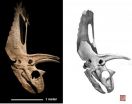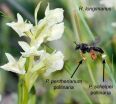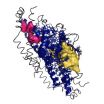(Press-News.org) Tel Aviv — The new environmentally-friendly concept of municipal "bike-sharing" is taking over European cities like Paris, and American cities like New York are also looking into the idea. It allows a subscriber to "borrow" a bike from one of hundreds of locations in the city, use it, and return it to another location at the end of the journey. It's good for commuters and for running short errands.
While the idea is gaining speed and subscribers at the 400 locations around the world where it has been implemented, there have been growing pains — partly because the projects have been so successful. About seven percent of the time, users aren't able to return a bike because the station at their journey's destination is full. And sometimes stations experience bike shortages, causing frustration with the system.
To solve the problem, Dr. Tal Raviv and Prof. Michal Tzur of Tel Aviv University's Department of Industrial Engineering are developing a mathematical model to lead to a software solution. "These stations are managed imperfectly, based on what the station managers see. They use their best guesses to move bikes to different locations around the city using trucks," explains Dr. Raviv. "There is no system for more scientifically managing the availability of bikes, creating dissatisfaction among users in popular parts of the city."
Their research was presented in November 2010 at the INFORMS 2010 annual meeting in Austin, Texas.
Biking with computers
An environmentalist, Dr. Raviv wants to see more cities in America adopt the bike-sharing system. In Paris alone, there are 1,700 pick-up and drop-off stations. In New York, there soon might be double or triple that amount, making the management of bike availability an extremely daunting task.
Dr. Raviv, Prof. Tzur and their students have created a mathematical model to predict which bike stations should be refilled or emptied — and when that needs to happen. In small towns with 100 stations, mere manpower can suffice, they say. But anything more and it's really just a guessing game. A computer program will be more effective.
The researchers are the first to tackle bike-sharing system management using mathematical models and are currently developing a practical algorithmic solution. "Our research involves devising methods and algorithms to solve the routing and scheduling problems of the trucks that move fleets, as well as other operational and design challenges within this system," says Dr. Raviv.
For the built environment
The benefits of bike-sharing programs in any city are plentiful. They cut down traffic congestion and alleviate parking shortages; reduce air pollution and health effects such as asthma and bronchitis; promote fitness; and enable good complementary public transportation by allowing commuters to ride from and to train or bus stations.
Because of the low cost of implementing bike-sharing programs, cities can benefit without significant financial outlay. And in some cities today, bicycles are also the fastest form of transport during rush hour.
The city of Tel Aviv is now in the process of deploying a bike sharing system to ease transport around the city, and improve the quality of life for its residents. Tel Aviv University research is contributing to this plan, and the results will be used in a pilot site in Israel.
###
American Friends of Tel Aviv University (www.aftau.org) supports Israel's leading, most comprehensive and most sought-after center of higher learning. Independently ranked 94th among the world's top universities for the impact of its research, TAU's innovations and discoveries are cited more often by the global scientific community than all but 10 other universities.
Internationally recognized for the scope and groundbreaking nature of its research and scholarship, Tel Aviv University consistently produces work with profound implications for the future.
END
The ability of some forms of plankton and bacteria to build an extra natural layer of nanoparticle-like armour has inspired chemists at the University of Warwick to devise a startlingly simple way to give drug bearing polymer vesicles (microscopic polymer based sacs of liquid) their own armoured protection.
The Warwick researchers have been able to decorate these hollow structures with a variety of nanoparticles opening a new strategy in the design of vehicles for drug release, for example by giving the vesicle "stealth" capabilities which can avoid the body's defences ...
Milan, Italy, 31 January 2010 – Most people who survive a stroke recover some degree of their motor, sensory and cognitive functions over the following months and years. This recovery is commonly believed to reflect a reorganisation of the central nervous system that occurs after brain damage. Now a new study, published in the February 2011 issue of Elsevier's Cortex, sheds further light on the recovery process through its effect on language skills.
For almost all right-handed people and for about 60% of left-handers, damage to the left side of the brain causes a condition ...
The endothelium is the inner lining of our blood vessels and normal functions of endothelial cells include enabling coagulation, platelet adhesion and immune function. Endothelial dysfunction is associated with reduced anticoagulant properties and the inability of arteries and arterioles to dilate fully.
The gradual decrease in endothelial function over time is a key factor in the development of diseases associated with ageing, especially cardiovascular disease (CVD). Many epidemiologic studies suggest protection against CVD from moderate intake of alcoholic beverages, ...
The recalled Sprint Fidelis implantable cardioverter-defibrillator (ICD) leads (Medtronic) failed more often in younger patients, women, and individuals with hereditary heart disease, according to a multicenter study published online Jan. 17 in Circulation. The researchers found that lead failure was not associated with death or serious injuries.
However, about half of the patients whose leads fractured experienced painful inappropriate shocks, according to lead author Robert G. Hauser, MD, of the Minneapolis Heart Institute® at Abbott Northwestern Hospital. In a previous ...
Cancer researchers have discovered an important protein, produced naturally inside cells, that appears to suppress the growth of prostate cancer cells in the laboratory. The findings, published tomorrow in the journal Cancer Research, offer promising leads for research towards new treatments.
Prostate cancer is the most common cancer among men in the UK, with 37,500 men diagnosed with the disease every year. Many prostate cancers are slow growing, but in some cases the cancer is aggressive and spreads to other parts of the body, such as the bone. These cases are much ...
Boys predominantly pass on flu to other boys and girls to girls, according to a new study of how swine flu spread in a primary school during the 2009 pandemic, published today in the journal Proceedings of the National Academy of Sciences. The results also suggest that flu transmission is most intensive between children of the same class, but that sitting next to an infected person does not significantly increase a child's risk of catching flu. The data will help researchers to model how epidemics spread and how interventions such as school closures can help contain an ...
New Haven, Conn.—Triceratops and Torosaurus have long been considered the kings of the horned dinosaurs. But a new discovery traces the giants' family tree further back in time, when a newly discovered species appears to have reigned long before its more well-known descendants, making it the earliest known member of its family.
The new species, called Titanoceratops after the Greek myth of the Titans, rivaled Triceratops in size, with an estimated weight of nearly 15,000 pounds and a massive eight-foot-long skull.
Titanoceratops, which lived in the American southwest ...
Scientists have discovered why orchids are one of the most successful groups of flowering plants - it is all down to their relationships with the bees that pollinate them and the fungi that nourish them. The study, published tomorrow in the American Naturalist, is the culmination of a ten-year research project in South Africa involving researchers from Imperial College London, the Royal Botanic Gardens, Kew, and other international institutions.
The orchid family is one of the largest groups of flowering plants, with over 22,000 species worldwide. Today's research suggests ...
Using funding provided under the American Reinvestment and Recovery Act, the U.S. Department of Energy's Savannah River National Laboratory has launched a demonstration project near one of the Savannah River Site's former production reactor sites to clean up chemically contaminated groundwater, naturally.
A portion of the subsurface at the Site's P Area has become contaminated with chlorinated volatile organic compounds that are essentially like dry-cleaning fluid. SRNL and Clemson University have patented a consortium of microbes that have an appetite for that kind ...
INDIANAPOLIS – A School of Science at Indiana University-Purdue University Indianapolis biophysicist has developed a new method to identify communication pathways connecting distant regions within proteins.
With this tool, Andrew J. Rader, Ph.D., assistant professor of physics, has identified a mechanism for cooperative behavior within an entire molecule, a finding that suggests that in the future it may be possible to design drugs that target anywhere along the length of a molecule's communication pathway rather than only in a single location as they do today. The discovery ...




